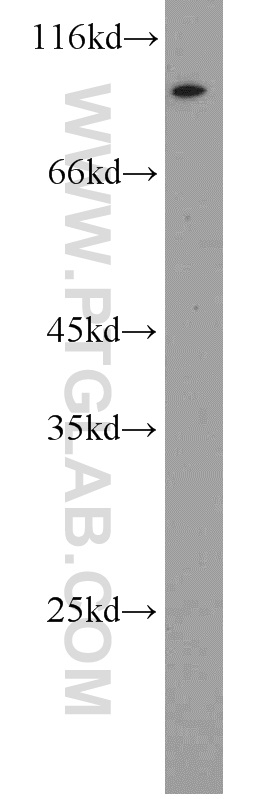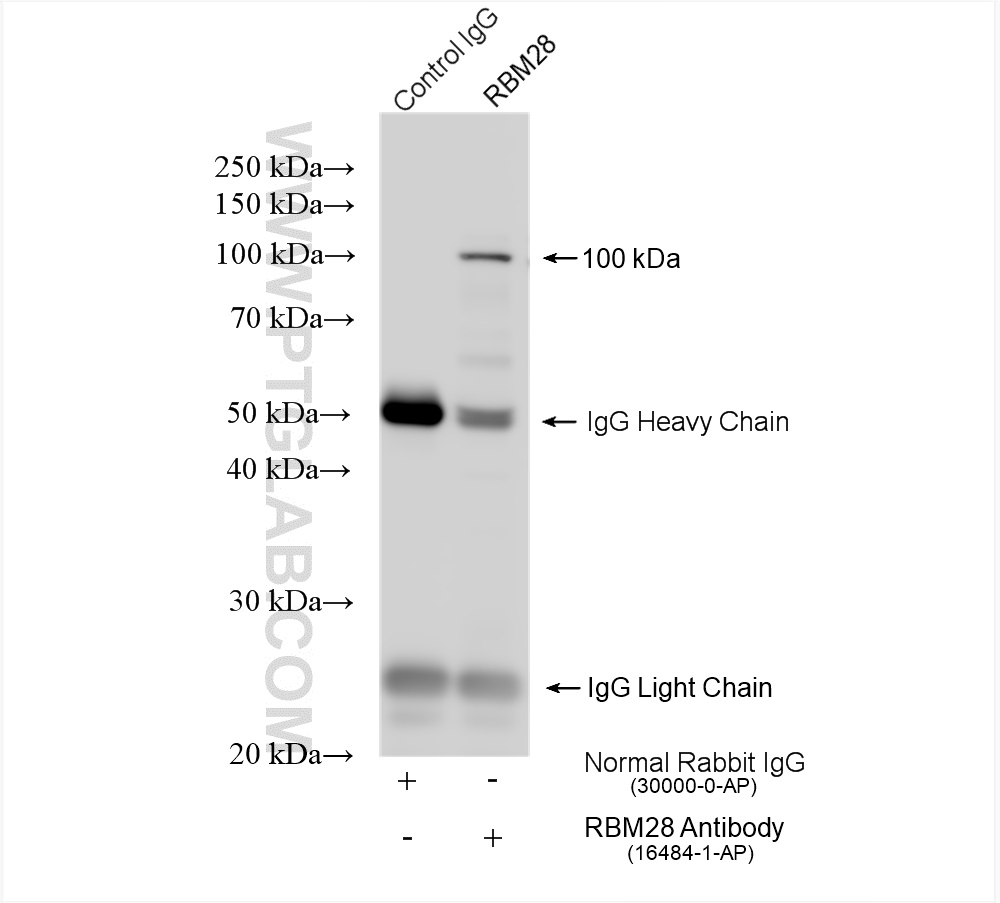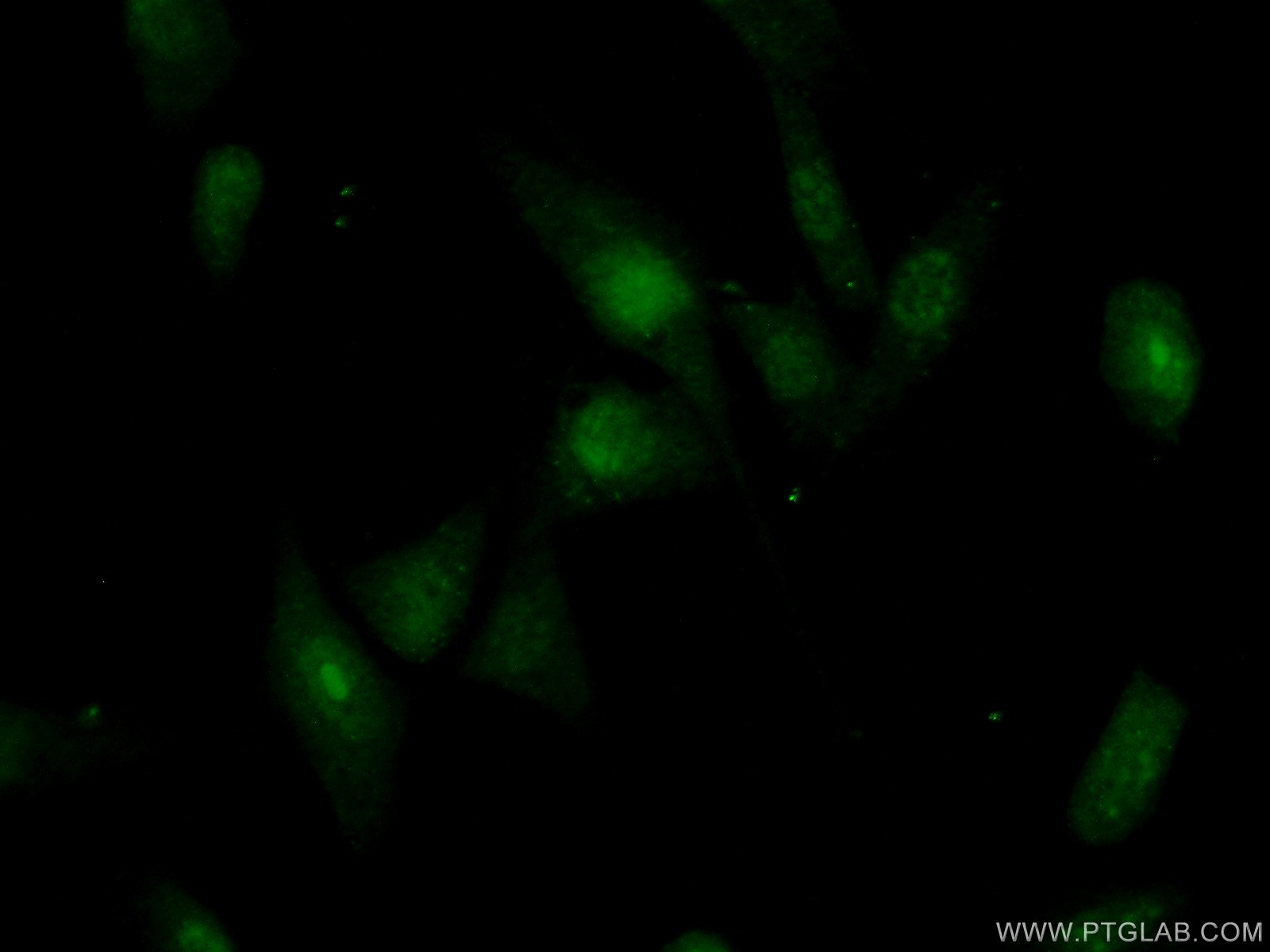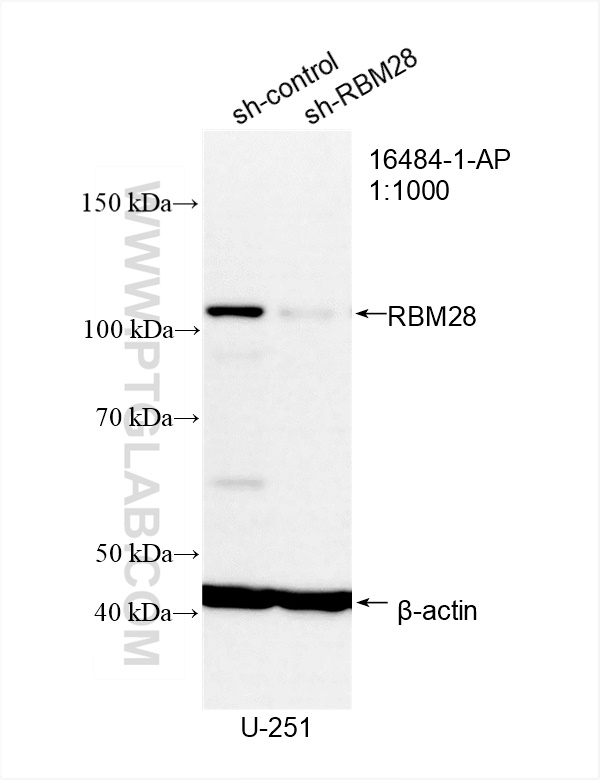验证数据展示
经过测试的应用
| Positive WB detected in | NIH/3T3 cells, U-251 cells |
| Positive IP detected in | NIH/3T3 cells |
| Positive IF/ICC detected in | NIH/3T3 cells |
推荐稀释比
| 应用 | 推荐稀释比 |
|---|---|
| Western Blot (WB) | WB : 1:500-1:2000 |
| Immunoprecipitation (IP) | IP : 0.5-4.0 ug for 1.0-3.0 mg of total protein lysate |
| Immunofluorescence (IF)/ICC | IF/ICC : 1:50-1:500 |
| It is recommended that this reagent should be titrated in each testing system to obtain optimal results. | |
| Sample-dependent, Check data in validation data gallery. | |
发表文章中的应用
| WB | See 2 publications below |
| IF | See 1 publications below |
产品信息
16484-1-AP targets RBM28 in WB, IF/ICC, IP, ELISA applications and shows reactivity with human, mouse, rat samples.
| 经测试应用 | WB, IF/ICC, IP, ELISA Application Description |
| 文献引用应用 | WB, IF |
| 经测试反应性 | human, mouse, rat |
| 文献引用反应性 | human |
| 免疫原 |
CatNo: Ag9606 Product name: Recombinant human RBM28 protein Source: e coli.-derived, PGEX-4T Tag: GST Domain: 411-760 aa of BC013889 Sequence: QLKVDLAVTRDEAAKLQTTKVKKPTGTRNLYLAREGLIRAGTKAAEGVSAADMAKRERFELLKHQKLKDQNIFVSRTRLCLHNLPKAVDDKQLRKLLLSATSGEKGVRIKECRVMRDLKGVHGNMKGQSLGYAFAEFQEHEHALKALRLINNNPEIFGPLKRPIVEFSLEDRRKLKMKELRIQRSLQKMRSKPATGEPQKGQPEPAKDQQQKAAQHHTEEQSKVPPEQKRKAGSTSWTGFQTKAEVEQVELPDGKKRRKVLALPSHRGPKIRLRDKGKVKPVHPKKPKPQINQWKQEKQQLSSEQVSRKKAKGNKTETRFNQLVEQYKQKLLGPSKGAPLAKRSKWFDS 种属同源性预测 |
| 宿主/亚型 | Rabbit / IgG |
| 抗体类别 | Polyclonal |
| 产品类型 | Antibody |
| 全称 | RNA binding motif protein 28 |
| 别名 | RNA-binding protein 28, RNA-binding motif protein 28, RNA binding protein 28, RNA binding motif protein 28 |
| 计算分子量 | 756 aa, 86 kDa |
| 观测分子量 | 100 kDa |
| GenBank蛋白编号 | BC013889 |
| 基因名称 | RBM28 |
| Gene ID (NCBI) | 55131 |
| RRID | AB_2238116 |
| 偶联类型 | Unconjugated |
| 形式 | Liquid |
| 纯化方式 | Antigen affinity purification |
| UNIPROT ID | Q9NW13 |
| 储存缓冲液 | PBS with 0.02% sodium azide and 50% glycerol, pH 7.3. |
| 储存条件 | Store at -20°C. Stable for one year after shipment. Aliquoting is unnecessary for -20oC storage. |
实验方案
| Product Specific Protocols | |
|---|---|
| IF protocol for RBM28 antibody 16484-1-AP | Download protocol |
| IP protocol for RBM28 antibody 16484-1-AP | Download protocol |
| WB protocol for RBM28 antibody 16484-1-AP | Download protocol |
| Standard Protocols | |
|---|---|
| Click here to view our Standard Protocols |
发表文章
| Species | Application | Title |
|---|---|---|
J Biol Chem RNA binding protein RBM28 can translocate from the nucleolus to the nucleoplasm to inhibit the transcriptional activity of p53. | ||
Cancer Lett RNA-binding motif protein 28 enhances angiogenesis by improving STAT3 translation in hepatocellular carcinoma |





